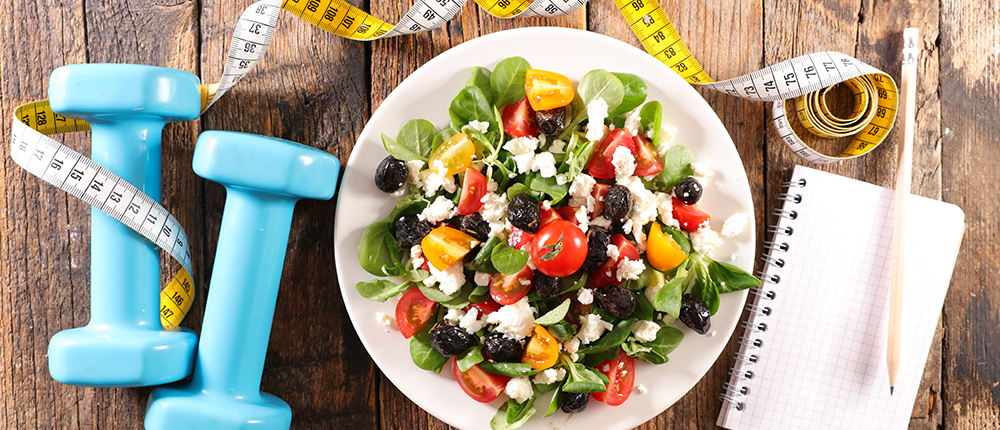Personalising your nutrition according to your height, age, weight and level of exertion is the key to success
Despite offering some great content in places, the common limitation of most on-line weight loss website’s or pages is they don’t fully explain the importance of personalising your nutritional behaviour.
- How many of you weight loss seeking enthusiasts have heard of the term ‘basal metabolic rate (BMR)’?
- How many of you understand how to calculate your ‘physical activity ratio (PAR)’ or ‘physical activity level (PAL)’ ?
What you often fail to get told, hear about or read is that optimum weight loss can and should only be achieved through a combination of food science and mathematics tailored specifically to each person. This sounds quite complicated right?
Don’t be put off, in reality manipulating these 2 variables is actually so simplistic that by the end of this article you will be able work out the required calorie intake for any person without having to do any further learning.
As a starting point remember that the recommended amount of weight to lose each week is 1 to 2 pounds, as losses greater than this typically mean your body at some point will be malnourished leaving it open to illness and burning muscle tissue not body fat (explained more later on). Therefore it is healthier for weight loss to be thought of instead as ‘inch loss’ which is more associated with a reduction in body fat and tracked using a tape measure not the BMI chart. With this in mind weight loss scales should only be used as a rough guide and more so for women with a body fat % above 30 and men with a body fat% above 20%.
Calculating Weight Loss
Step 1
To plan the optimum calorific value of your inch loss diet you must first determine your body composition; height (cm) and weight (kg). These values along with your age and gender will help you using the Harris-Benedict formula below to calculate your basal metabolic rate (BMR) the minimum number of daily calories required for the body to function.
BMR Formula
- Women: BMR = 655 + ( 9.6 x weight in kilos ) + ( 1.8 x height in cm ) – ( 4.7 x age in years)
- Men: BMR = 66 + ( 13.7 x weight in kilos ) + ( 5 x height in cm ) – ( 6.8 x age in years )
Step 2
Now after following Step 1 your calculated BMR needs to be multiplied by your weekly physical activity level (PAL) see below, which will give you your total daily calorie intake figure required for weight maintenance.
Physical Activity Level (PAL)
- Sedentary (little or no exercise): Calorie-Calculation = BMR x 1.2
- Lightly active (light exercise/sports 1-3 days/week) : Calorie-Calculation = BMR x 1.375
- Moderately active (moderate exercise/sports 3-5 days/week) : Calorie-Calculation = BMR x 1.55
- Very active (hard exercise/sports 6-7 days a week) : Calorie-Calculation = BMR x 1.725
- Extra active (very hard exercise/sports; physical job or 2x training) : Calorie-Calculation = BMR x 1.9
Step 3
From the calculation of BMR x PAL you can now effectively work out how many calories to cut out of your diet each day to safely lose weight. Remember weight loss of 1-2 pounds a week will necessitate a deficit of 500 -1,000 calories per day.
Example case study: Katherine; Age: 33, Height: 167cm, Weight: 76.2kg.
– BMR (the minimum no of calories needed per day) = 1,532
– 1,532 (BMR) x 1.375 (PAL/Training 1-3 days a week) = 2,106 (Daily calorie intake required to sustain exercise/lifestyle)
– Calorie intake required for weight loss = 1,606 – 1,106(500-1,000 kcal deficit)
Planning Your Diet
It is crucial that in reaching your newly calculated calorie intake figure for weight (inch) and body fat loss you adhere to a few golden rules as outlined below…
- Avoid Malnutrition (Catabolism)
As studies have shown excessive periods of not eating (>3 hours) often leads to the early onset of malnutrition and consequent tissue/organ damage. Malnutrition is also heavily linked to severe increases in the release of the stress hormone cortisol, which stimulates excessive glucose production. So much so that the body struggles to produce enough insulin to break the new glucose levels down. Typically any excess glucose is then converted and stored as body fat, leading ultimately to weight gain.
- Eat All 3 Macronutrients (Carbohydrates, Protein and Fats) At Every Meal.
Again to avoid malnutrition it is imperative that at each meal we balance our food plate in accordance with the ratio of 50% carbohydrates, 25% protein and 25% vitamins, minerals and fats. *Note that straight after exercise it is recommended to switch the carbohydrate and protein ratio’s around to speed up muscle recovery and repair.
- Eat Organic
Try to especially avoid eating white flour based carbohydrates, instead try to consume more nutrient friendly organic whole grains. Consumption of this cereal grain or natural starch is found in most complex carbohydrate foods and has been shown to help lower triglyceride levels, a process which in turn stabilises blood sugar levels and aids controlled weight loss. In addition try to source your protein from organic sources away from the supermarket, ask your local butcher if they use an organic farm to source their stock. Lastly always give preference to organic fruit, vegetables and animal fat sources, studies show organic diets are more effective for weight loss and significantly improve health.
- A Few Additional Tips
- Keep your daily saturated fat and refined sugar intake below 30 grams (Males) and 20 grams (Females).
- Do not exceed more than 6 grams of salt a day (sea salt always best).
- Avoid consuming more than 1-2 stimulants a day (Coffee, Tea and Fizzy drinks).
- Drink at least 2-3 litres of water each day and, post exercise a minimum of 20 ounces for every pound lost during training (weigh yourself before and after to work this out).
Hopefully from now reading this short article you have a better understanding of how to calculate your weight (inch) loss and the steps required to reduce body fat. It must be stated that this article like many on-line sources only provides general nutrition advice alongside the specific methods of how determine your daily calorie intake. The final food choices within any nutrition plan should still be unique to each person and chosen with the advice of a qualified professional.
By
Sean Burgess (MSc, BSc (Hons), ASCC, MGBT)
SB Fitness Founder
If you would like us to make you a personalised nutrition plan click on the following link. https://seanburgessfitness.com/personal-training/personalised-health-programmes/personalised-nutrition-programme/




